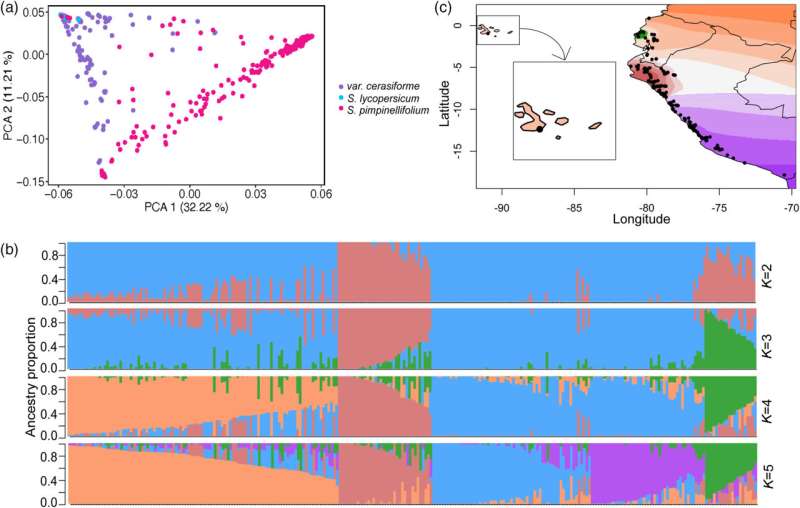This article has been reviewed according to Science X's editorial process and policies. Editors have highlighted the following attributes while ensuring the content's credibility:
fact-checked
peer-reviewed publication
trusted source
proofread
Unlocking the secrets of salt stress tolerance in wild tomatoes

As our climate changes and soil salinity increases in many agricultural areas, finding crops that can thrive in these challenging conditions is crucial. Cultivated tomatoes, while delicious, often struggle in salty soils. Their wild cousins, however, have evolved to survive in diverse and often harsh environments.
A recent study delved into the genetic treasure trove of wild tomatoes to uncover secrets of salt tolerance that could be used to develop resilient crop varieties. A team of researchers focused on Solanum pimpinellifolium, the closest wild relative of our beloved cultivated tomato. These tiny, cherry-sized fruits might not look impressive, but they pack a punch when it comes to genetic diversity and stress resistance.
The team began by exposing the wild tomatoes to varying levels of salt stress. Then, they used high-throughput phenotyping techniques in both greenhouse and field conditions to uncover extensive variations in how these plants responded to the salty conditions.
"One of the study's most intriguing findings was that a plant's overall vigor—its ability to grow quickly and robustly—played a significant role in its salt tolerance. This suggests that breeding healthier, more vigorous plants could indirectly improve their ability to withstand salt stress," said Magda Julkowska, an assistant professor at the Boyce Thompson Institute and lead author of the study, which was recently published in The Plant Journal.
The researchers found that traits such as transpiration rate (the amount of water vapor a plant loses through its leaves), shoot mass (the weight of the plant's above-ground parts), and ion accumulation (the build-up of ions, such as sodium and potassium, within plant tissues) showed significant correlations with plant performance under salt stress. Interestingly, while transpiration rate was a key determinant of plant performance in the greenhouse, shoot mass strongly correlated with yield under field conditions.
"We were surprised to find that the amount of salt the plants accumulated in their leaves wasn't as important to their overall performance as previously thought," said Julkowska. "This challenges some existing ideas about how plants cope with salt stress and opens up new avenues for research."
One of the most exciting findings was the identification of candidate genes not previously associated with salt stress tolerance. Julkowska added, "These specific genotypes can be used as allele donors for further improving crop performance and developing more sustainable agriculture."
The study contributes to a better understanding of salt stress tolerance in wild tomato species and lays the groundwork for further investigations into the genetic basis of these traits. The findings can inform breeding efforts for salinity tolerance in tomatoes and other crops. This could lead to expanded growing regions, more stable yields in the face of changing climates, and potentially tomatoes that require less water and fewer resources to cultivate.
While we might not see salt-loving tomatoes on supermarket shelves anytime soon, this research is a significant step toward creating a more resilient and sustainable food system. It's a powerful reminder that sometimes, the solutions to our most pressing agricultural challenges might be found in the wild relatives of the plants we already know and love.
More information: Mitchell Morton et al, Deciphering salt stress responses in Solanum pimpinellifolium through high‐throughput phenotyping, The Plant Journal (2024). DOI: 10.1111/tpj.16894
Journal information: The Plant Journal
Provided by Boyce Thompson Institute




















